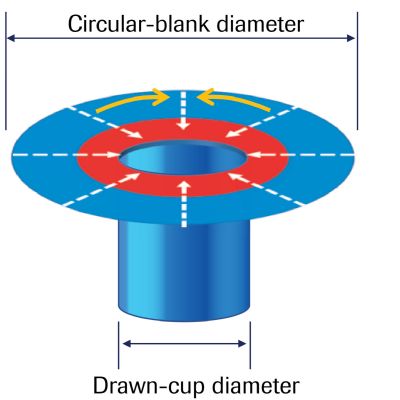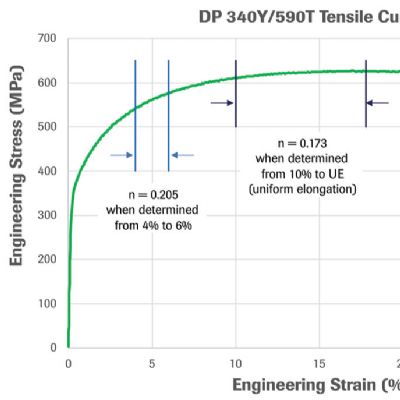Deep Drawing Stainless Steel
February 1, 2009Comments
Metal-stamping companies and tool shops experienced with plain carbon steels often have problems making parts from stainless steel. Negative past experiences and poorly designed manufacturing processes often produce misconceptions and myths regarding these corrosion-resistant materials.
An example: All stainless steels have workhardening rates higher than plain carbon steels. This fact contributes to a long-standing myth that stainless steels are less formable than low-carbon steel because they workharden too rapidly. In reality, stainless steels are very formable. In fact, some grades have substantially higher ductility than plain carbon steels. Furthermore (another myth buster), stainless steel is frequently deep drawn into difficult shapes without intermediate annealing. Even the less formable ferritic grades have outstanding ductility and can be deep drawn easily. The Specialty Steel Industry of North America, a voluntary trade association representing virtually all the producers of specialty steel in North America, asserts that working with stainless steel is not difficult, it’s just different.
Stainless steels are iron-based alloys containing more than 10.5 percent chromium. The chromium in the steel reacts naturally with oxygen in the air to create a passive chromium-oxide (Cr2O3) film on the surface of the steel. In simple terms, passive means that the sheet surface no longer reacts chemically to its surrounding environment. It is this passive film to which stainless steels owe their corrosion resistance.
Essentially, two groups of stainless steels are commonly used to deep draw metal stampings; these steels are classified in the austenitic and ferritic groups. Type 200 and 300 series identify the austenitic group. Type 304 and 316 are nonmagnetic and are the most widely used grades in the austenetic group; type 304 being the most common. Some difficult deep drawing may require a special version of grade 304 having slightly higher nickel content. This grade is sometimes referred to as 304 DDQ. However, it would not be sound practice to use 304 DDQ by default as it is more expensive and not as readily available. Besides, most deep drawing can be readily achieved with standard grades materials such as 304 or 305.
Type 400 series identifies the ferritic group, although there are some martensitic stainless steels within the 400 series as well. Type 430 is the general-purpose stainless steel of the ferritic group. Its ductility is similar to carbon steel and this grade is magnetic.
Both ferritic and austenitic stainless steels workharden at faster rates than carbon steels. Therefore, it requires higher pressures to form stainless steel than it does to form plain carbon steel of the same thickness and temper. In addition, the chromium-oxide surface film, even though it is a very thin layer, significantly increases the level of friction between the tool and the work piece. The combination of high forming pressures and surface friction results in significantly higher tool-wear rates than those used to form carbon steels. These higher wear rates increase tool maintenance, downtime and production costs. As a result, proper processing methods, tool coatings and lubricants must be employed in order to improve overall tool performance.
If your stamping operation or tool and die company is primarily experienced with plain carbon steels, but finds that it must occasionally produce parts from stainless steel, the following practical tips should prove helpful:








